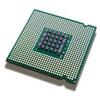Autonomous aerial robots are increasingly being deployed in real-world scenarios, where transparent obstacles present significant challenges to reliable navigation and mapping. These materials pose a unique problem for traditional perception systems because they lack discernible features and can cause conventional depth sensors to fail, leading to inaccurate maps and potential collisions. To ensure safe navigation, robots must be able to accurately detect and map these transparent obstacles. Existing methods often rely on large, expensive sensors or algorithms that impose high computational burdens, making them unsuitable for low Size, Weight, and Power (SWaP) robots. In this work, we propose a novel and computationally efficient framework for detecting and mapping transparent obstacles onboard a sub-300g quadrotor. Our method fuses data from a Time-of-Flight (ToF) camera and an ultrasonic sensor with a custom, lightweight 2D convolution model. This specialized approach accurately detects specular reflections and propagates their depth into corresponding empty regions of the depth map, effectively rendering transparent obstacles visible. The entire pipeline operates in real-time, utilizing only a small fraction of a CPU core on an embedded processor. We validate our system through a series of experiments in both controlled and real-world environments, demonstrating the utility of our method through experiments where the robot maps indoor environments containing glass. Our work is, to our knowledge, the first of its kind to demonstrate a real-time, onboard transparent obstacle mapping system on a low-SWaP quadrotor using only the CPU.
翻译:暂无翻译



